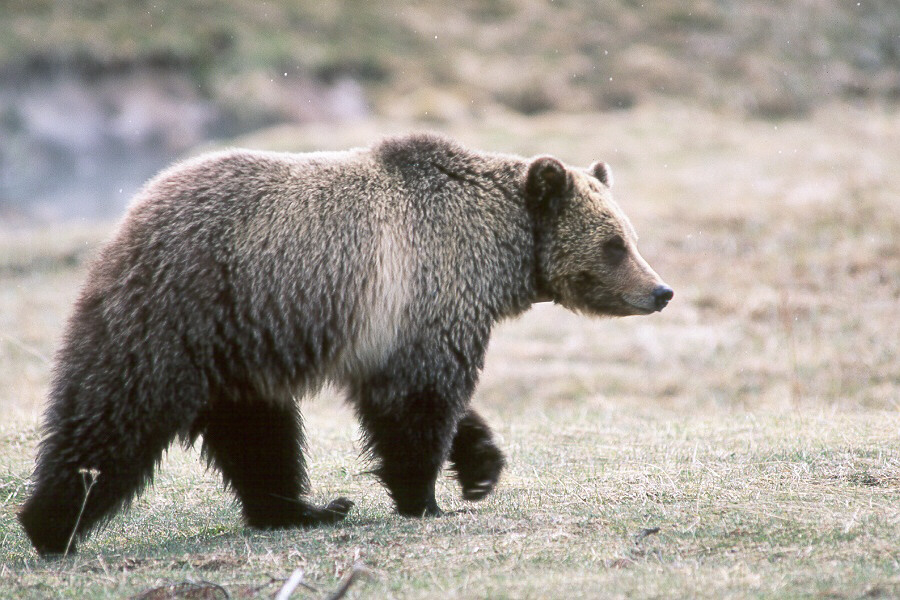
A public comment submitted to Montana Fish, Wildlife and Parks in support of the agency’s draft grizzly bear management plan.
Director Worsech and members of the Commission,
Thank you for the opportunity to comment on Montana Fish, Wildlife and Parks’ draft grizzly bear management plan. PERC applauds FWP for its role in recovering grizzly bears, Montana’s state animal, in the Northern Continental Divide Ecosystem and Greater Yellowstone Ecosystem and for the work that went into this proposed statewide plan. The recovery of grizzly bear populations in the state has been an incredible conservation achievement, which may soon be rewarded by the delisting of several populations under the federal Endangered Species Act. FWP’s proposed plan seeks to facilitate the continued growth and health of these populations, while also being sensitive to the effects a large carnivore can have on communities, landowners, and the agriculture industry.
PERC is the national leader in market solutions for conservation, with over 40 years of research and a network of respected scholars and practitioners. Through research, law and policy, and innovative field conservation programs, PERC explores how aligning incentives for environmental stewardship produces sustainable outcomes for land, water, and wildlife. Founded in 1980, PERC is nonprofit, nonpartisan, and proudly based in Bozeman, Montana. With PERC headquartered in Yellowstone bear country, grizzlies have featured prominently in our research, legal and policy engagement, and on-the-ground conservation efforts. PERC has studied the critical role of states, private landowners, and conservation groups in recovering grizzly bear populations. It has long supported the delisting of recovered bear populations and opposed proposals to permanently federalize their management. It has championed innovative policies that would allow conservationists to play a greater role in supporting grizzly bears and shielding innocent landowners from the costs imposed by bears.
While recovering grizzly bear populations to the point that they can be delisted under the Endangered Species Act is a critical goal, FWP is correct to set higher goals for the long-term health and management of the species. It explicitly rules out containing bears to the federally-designated recovery zones, for instance. Instead, FWP proposes to manage these zones to produce populations abundant enough to encourage the dispersal of bears into areas that can provide long-term connectivity between populations. That connectivity, and the increased bear numbers it would require, will result in healthier, genetically diverse bear populations at considerably less risk of backsliding onto the Endangered Species Act list once again. PERC also appreciates the plan’s discussion of allowing bears to disperse to any other areas (those that don’t promote connectivity), provided that conflict is avoided.
Although hunting of grizzly bears is currently precluded by Endangered Species Act regulations, the draft plan devotes significant attention to what a future hunt might look like. While PERC agrees that hunting can be a useful management tool, hunting should only occur in areas where grizzly populations are healthy enough to sustain it and the plan should be structured to benefit grizzly conservation, including by generating revenue for conservation actions, encouraging social acceptance of grizzlies, and addressing the costs imposed on private landowners. As hunting of other species has shown, allocating opportunity exclusively through a random lottery may not create the sense of involvement and engagement among local landowners that FWP predicts. Instead, reserving opportunities for the landowners who provide habitat and bear the costs of a species has been more effective at creating landowner buy-in. Since the number of opportunities would likely be too few to allow this sort of division for grizzly bears, an alternative would be to charge higher fees than the state has previously considered and use the proceeds to create a fund that compensates private landowners for the presence of grizzlies and otherwise support the species conservation.
Finally, PERC appreciates the draft plan’s discussion of engagement with community groups to encourage bottom-up, community-based efforts to resolve management challenges. We agree that such an approach yields effective, durable solutions which are tailored to local communities and bolstered by local buy-in. PERC encourages FWP to consider conservation organizations as partners in fostering these ground-up solutions and to identify areas in which it would welcome such solutions. Currently, the discussion of community engagement is limited to Table 1. There is no mention of it in the more detailed discussion of FWP’s preferred alternative. We encourage FWP to expand on how its implementation of the proposed plan would respect and adapt to innovative solutions developed through collaboration between tribes, local communities, landowners, and conservationists. Could collaboration be used, for instance, to facilitate the identification of new translocation or relocation sites, to increase social acceptance of grizzlies and allow expansion to new areas, or to influence responses to conflict? For other species, each of these issues have benefitted from local collaboration and could see the same benefits for grizzly bears.
Thank you for your consideration of these comments.



